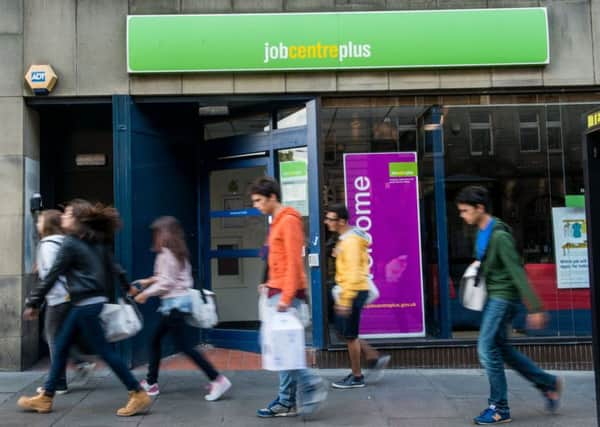Jobless map reveals varying fortunes of a nation


From the fast-growing jobs market in the Highland capital of Inverness to the deep pockets of worklessness in the former industrial heartlands of the central belt, Scotland’s unemployment rates continue to wildly differ according to data from the Office National Statistics.
Inverness and Nairn now has just 2.1 per cent of its adult population out of work - the second lowest in Scotland after Aberdeen Donside (1.8 per cent), an area long driven by years of oil and gas prosperity.
Advertisement
Hide AdAdvertisement
Hide AdBut you don’t have to travel far south before you hit some of the highest unemployment rates in Scotland.
In Dundee West, unemployment stands at 12 per cent, in Mid Fife and Glenrothes its 11.1 per cent with Cunninghame South at 11 per cent.
Glasgow Provan hits the worst rate in the country where 14.2 per cent of those aged over 16 are without work.
Between the Highland Capital and this part of Glasgow, that sweeps the north and east of the city, the unemployment rate increases just over seven fold.
Ivan McKee, the new SNP MSP for Glasgow Provan, said he understands the challenging road ahead for his constituents, who traditionally would have been employed at factories such as the Saracen Foundry.
New places such as Queenslie Industrial Estate, where businesses include Top Bots reusable nappies, which are used in Finland’s baby box scheme, and Soapworks, whose clients include Body Shop and Elemis, offer new opportunities, the MSP said.
But with some families out of work for two generations, you have to start building aspiration from the ground level, he added.
Mr McKee, a businessman with a record in manufacturing, said: “We are trying to create ideas for business amongst young people. A lot of it is about aspiration but people don’t always understand what they can achieve if they put their minds to it. People are very, very capable of doing that but they may come from a background of one or two generations of unemployment. Its about helping create that aspiration where they can do more than that.”
Advertisement
Hide AdAdvertisement
Hide AdThe MSP has pledged half his parliamentary salary - around £2,000 a month after tax - to groups and causes which aim to create jobs - particularly for the young - within his constituency.
Mr McKee said that the same tools used in places such as Inverness to drive growth would equally apply to a place such as Glasgow Provan.
“I think it comes down to focusing on a specific area, focusing on what you are good at and getting the various agencies ahead of the curve to attract the best opportunities that they can to that area,” he added.
Inverness was granted city status in 2000 and has since witnessed significant growth due, in part, to the creation of the University of Highlands and Islands campus and the effective work of Highlands and Islands Enterprise in attracting life sciences and renewables companies to the north.
“They have together changed the image of Inverness from that which existed a decade or so ago. It is now very much a city no longer a town,” said Fergus Ewing, MSP for Inverness and Nairn.
Population has also soared, growing four times the national rate between 2001 and 2011.
The expansion of the Port of Inverness - a regular stop off for cruise ships - and the airport, which has announced new services to Heathrow and Amsterdam, also points to economic growth, said Mr Ewing, cabinet secretary for rural economy, said.
The dualling of the A9 and A96 and the upgrade of rail lines to Aberdeen and Perth would also drive further prosperity, he added.
Advertisement
Hide AdAdvertisement
Hide AdStewart Nicol, chief executive of the Inverness Chamber of Commerce, said a broad spectrum of jobs from the service and tourism industry to highly skilled positions in medical sciences, digital health and IT now served the city. He pointed to the arrival of firms such as Lifescan - a world centre for diabetes research.
The geographical position of Inverness had also helped to forge some of its strength, Mr Nicol said.
He added: “Our economy is populated by entrepreneurs, by people who figure out how to do business on a global scale from the Highlands.”